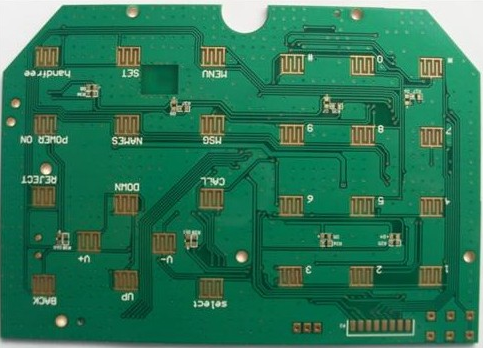Preliminary design of the simulation operation of the PCB In order to ensure that the designed circuit diagram can work normally, computer software must first be used for simulation. This type of software can read the design drawing and display the operation of the circuit in a variety of ways.
This is more effective than actually making PCB samples and then using manual measurements.
The way the parts are placed on the PCB depends on how they are connected. They must be connected to the path in the most efficient way. The so-called efficient wiring is that the shorter the leader line, the fewer the number of layers (which also reduces the number of guide holes), the better, but in actual wiring, we will mention this problem. This is what the bus looks like when it is connected on the PCB.
In order to make the components have perfect wiring, the placement location is very important. The possibility of testing wiring and correct operation at high speeds. Part of today’s computer software can check whether the position of each component is properly connected, or check whether it is working properly under high-speed operation. This step is called arranging parts, but we will not study them too deeply.

If there is a problem with the circuit design, you can also rearrange the position of the components before exporting the circuit on site.
The connections in the wiring overview on the exported PCB now look like field wiring. This step is usually fully automated, but it usually requires manual changes to some parts. This is a wire template for a 2-story floor. The red and blue lines represent the component layer and solder layer of the PCB, respectively. The white text with four squares indicates the screen version of the printed surface of the various signs. The red dots and circles represent drilling and pilot holes. On the right side, we can see a golden finger on the soldering surface on the PCB.
The final component of the PCB is often referred to as the working film (artwork). Each design must meet a series of requirements, such as minimum clearance between lines, minimum line width and other similar practical restrictions. These regulations vary according to factors such as the speed of the circuit, the strength of the transmitted signal, the sensitivity of the circuit to power consumption and noise, as well as the quality of materials and manufacturing equipment. If the current intensity increases, the thickness of the wire must also be increased. In order to reduce the cost of the PCB while reducing the number of layers, it is also important to pay attention to whether these regulations are still consistent.
If a structure with more than 2 layers is required, a power layer and a ground layer are usually used to prevent the transmission signal on the signal layer from being affected and can be used as a shield for the signal layer.
The rear circuit test of the wire In order to confirm that the wire can work normally after the wire, it must pass the final test.
This test can also check for incorrect connections, all online follow the overview.
The establishment of production documents Because PCB design has many CAD tools, manufacturers must have documents that meet the standards to make circuit boards. There are several standard specifications, but the most commonly used is the Gerber file specification. A set of Gerber files includes a plan view of each signal, power and ground plane, a plan view of the printed surface of the resistance welding layer and the stencil, and specified files such as drilling and extraction.
Electromagnetic compatibility issues Electronic devices that are not designed in accordance with EMC (Electromagnetic Compatibility) specifications may emit electromagnetic energy and interfere with nearby devices. EMC imposes maximum limits on electromagnetic interference (EMI), electromagnetic field (EMF) and RF interference (RFI). This regulation ensures the normal operation of nearby electrical appliances and other electrical appliances. EMC strictly limits the energy scattered or transmitted to other devices, and is designed to reduce the magnetization of external EMF, EMI, RFI, etc. In other words, the purpose of this regulation is to prevent electromagnetic energy from entering or being emitted through the device. This is actually a difficult problem to solve. Usually, power and ground planes are mainly used, or the PCB is placed in a metal box to solve these problems. The power and ground layers can prevent the signal layer from being disturbed, and the metal box has the same practicality.
We did not go too deeply into these issues. The maximum speed of the circuit depends on the operating mode according to EMC regulations. Internal EMI, such as current depletion between conductors, increases with increasing frequency. If the current gap between the two is too large, then the distance between the two must be lengthened. It also tells us how to avoid high voltage and minimize the current consumption of the circuit. The delay rate of the wiring is also very important, so the shorter the length, the better. Therefore, small PCBs have good wiring and are more suitable for high-speed operation than large PCBs.